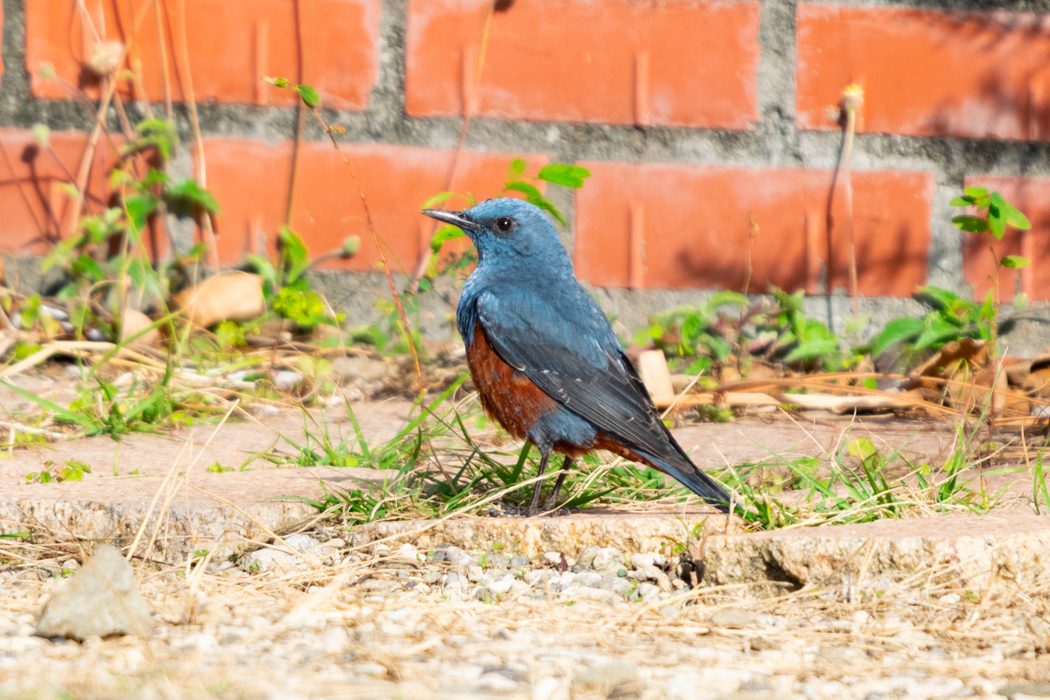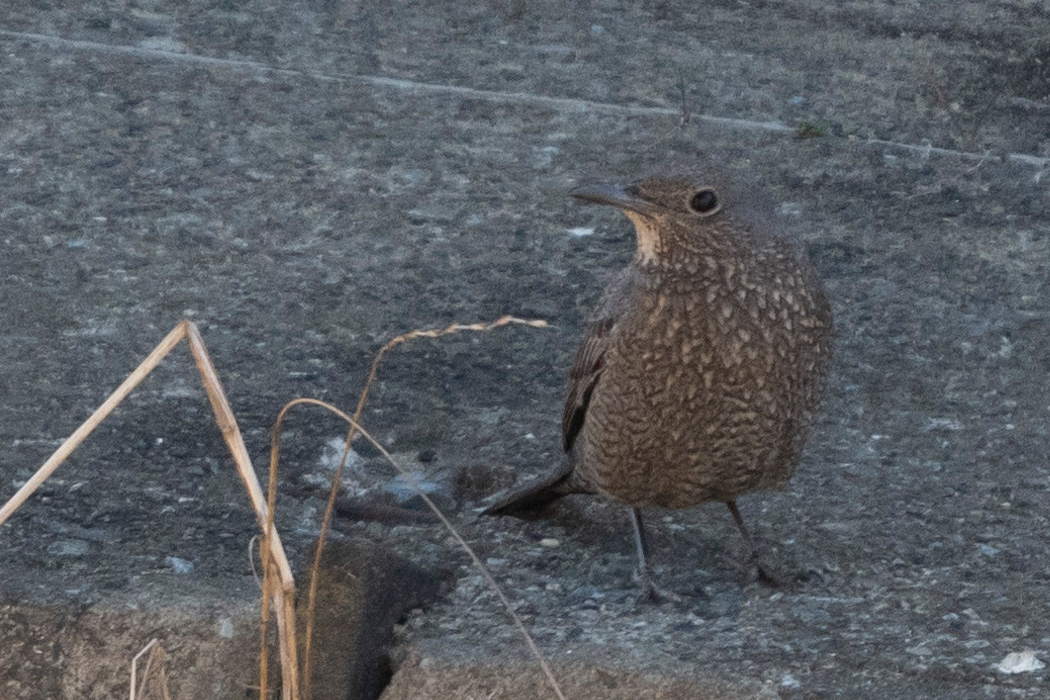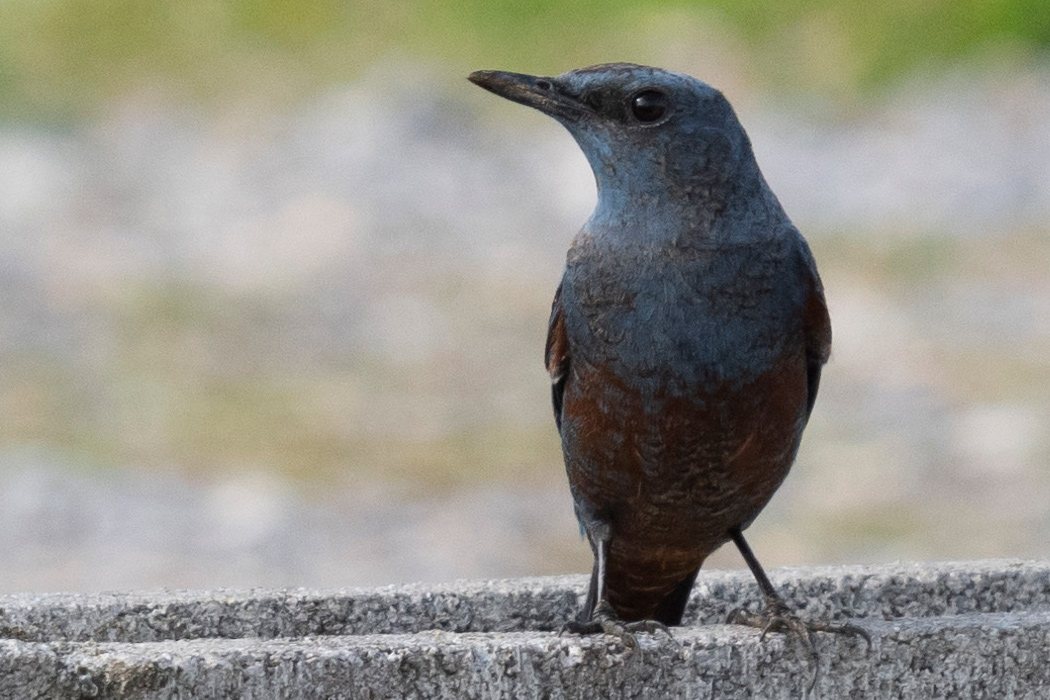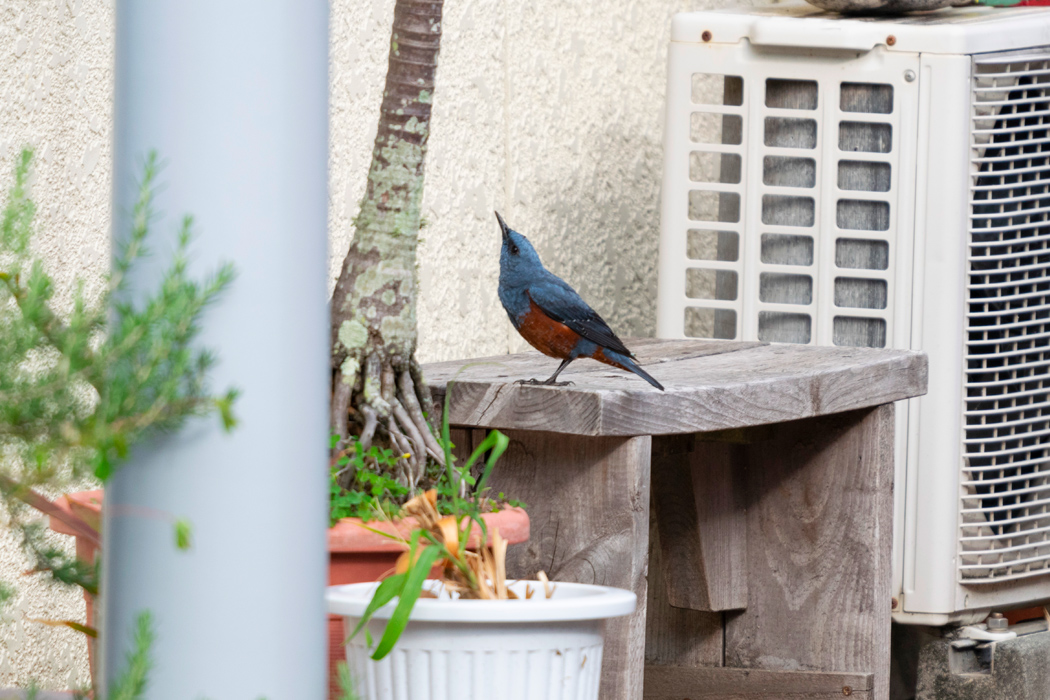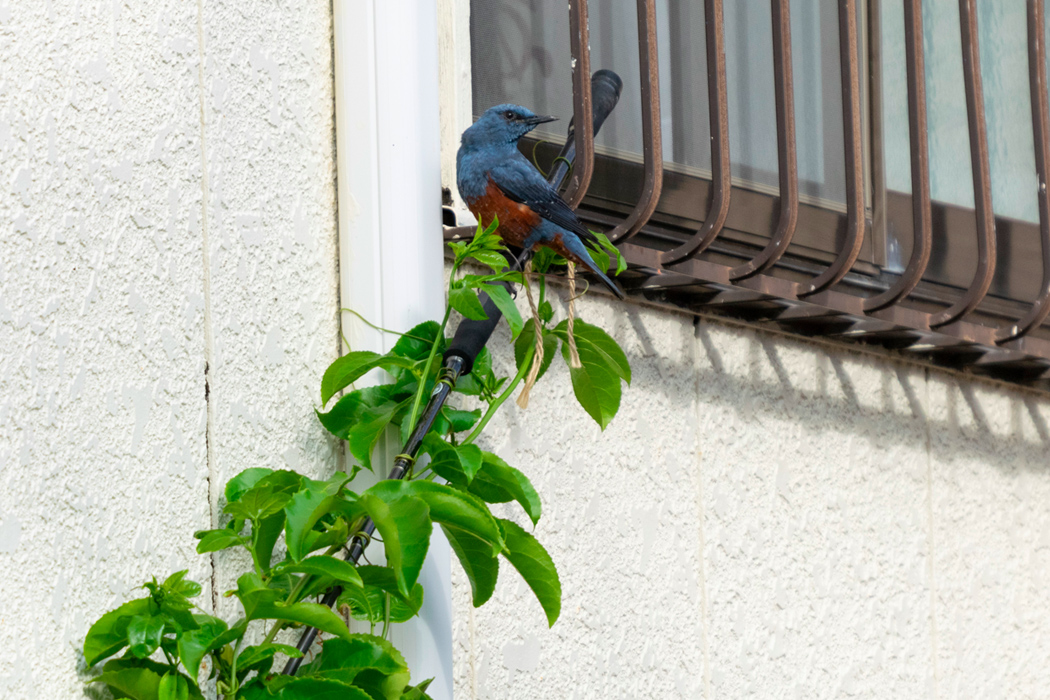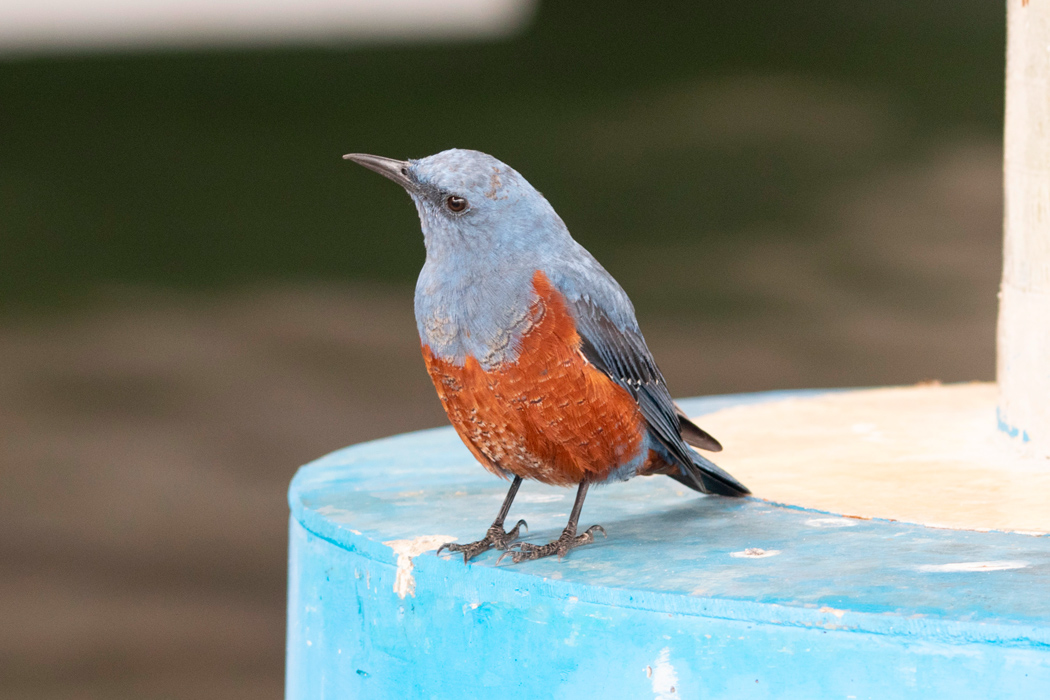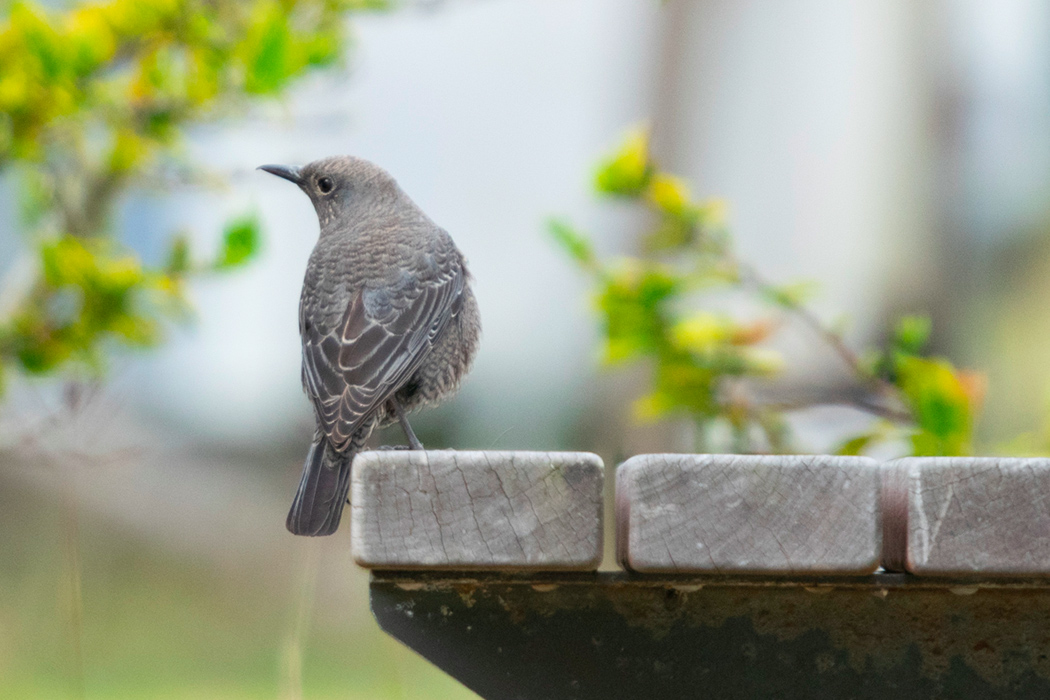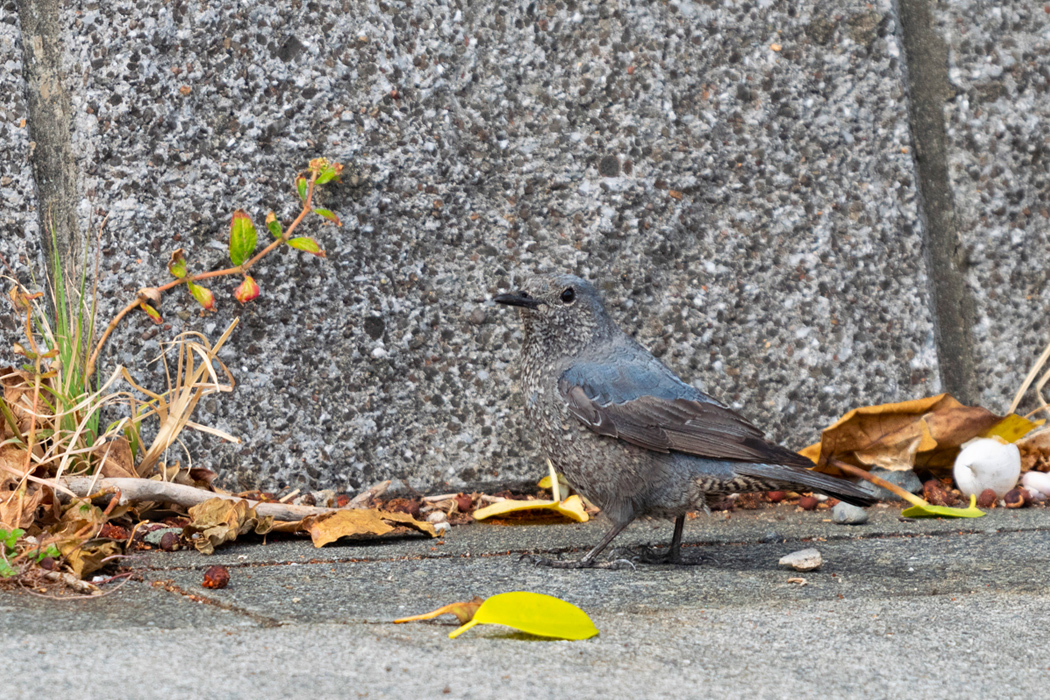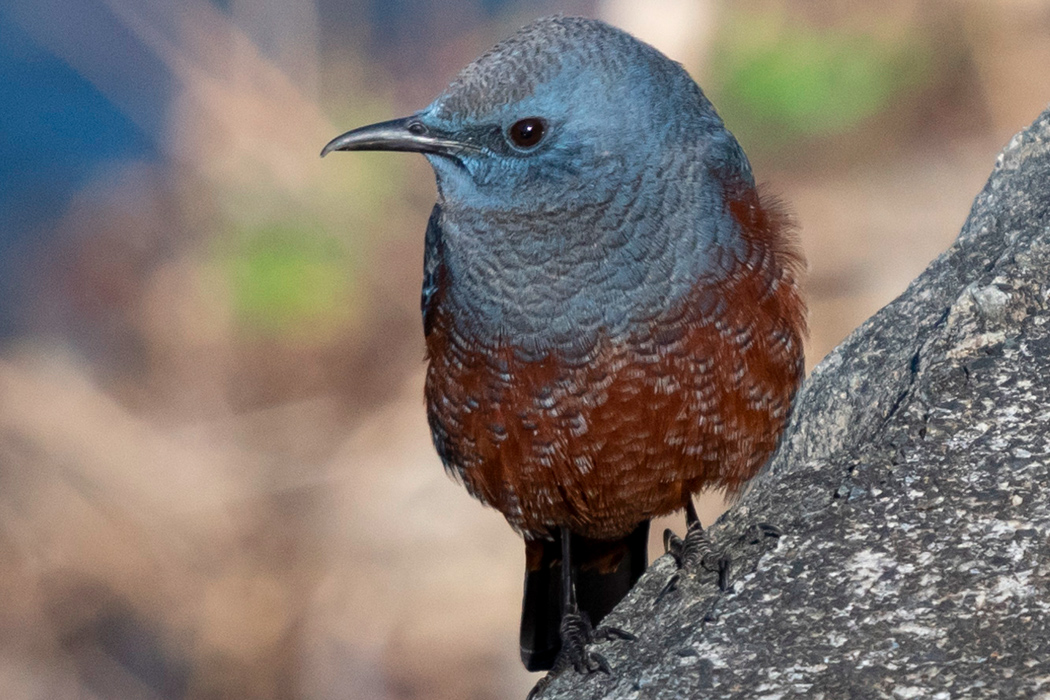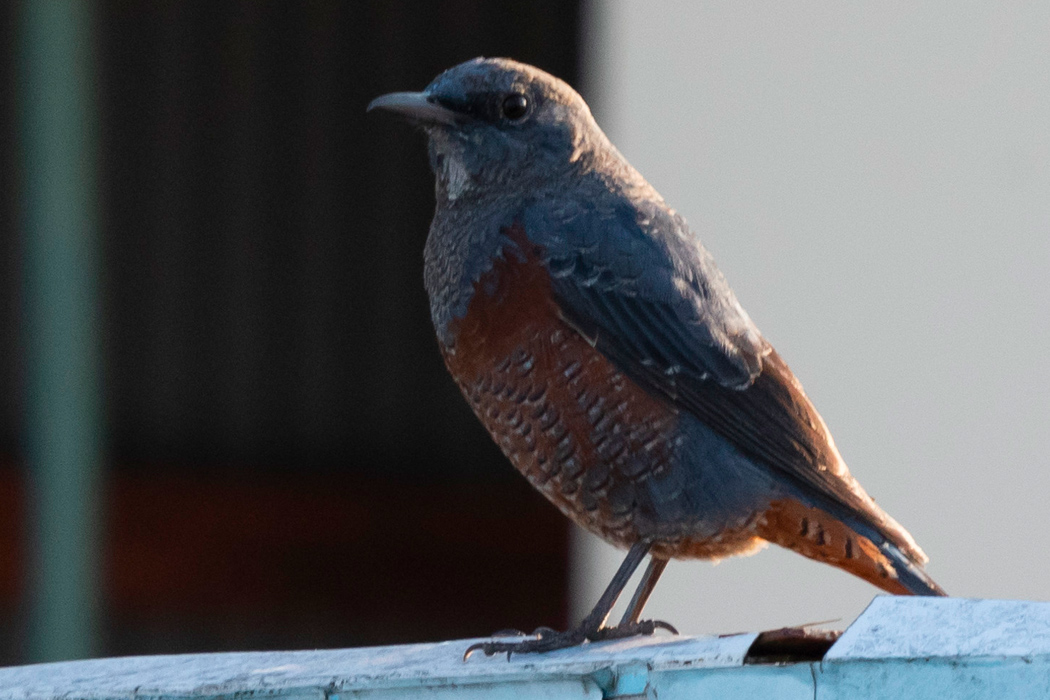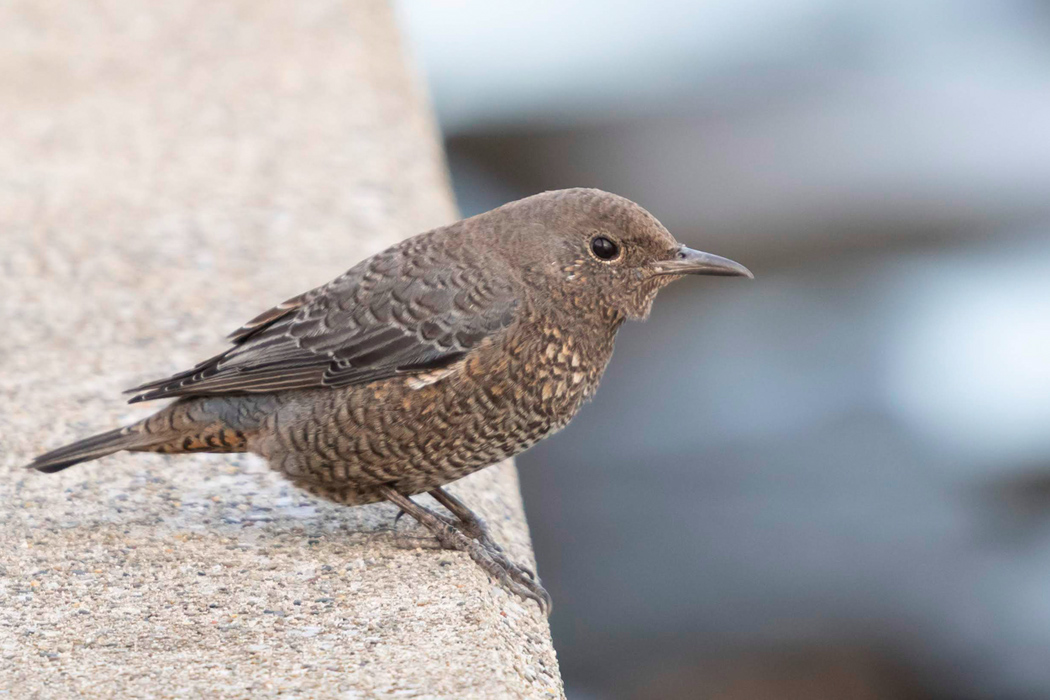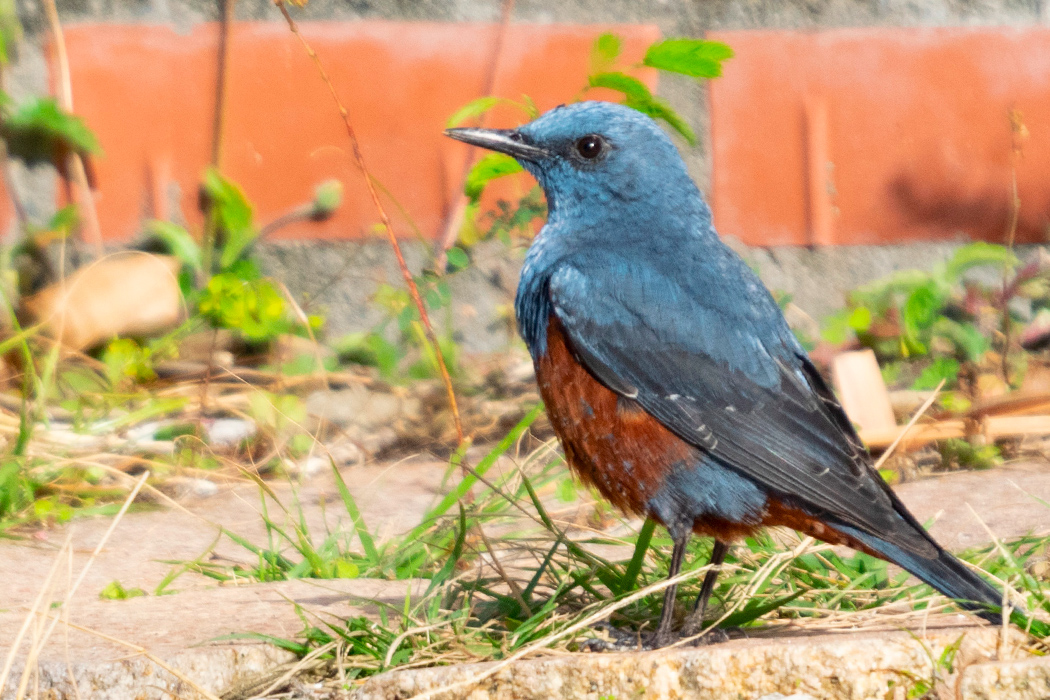
Blue Rock Thrush
sings with a complex melody.
| Scientific name | Monticola solitarius |
| English name | Blue Rock Thrush |
| Japanese name | 磯鵯 |
| Classification | Aves |
| Classification details | Passeriformes Muscicapidae |
| Full length | about 23cm. |
| Distribution | It can be seen all over Japan, even in other seaside cities. |
Characteristics
A bird of the flycatcher family with a beautiful dark blue color from its head to its wings. It says "bulul-eared bulbul", but it is not a bulbul. The male has a brick-colored belly and a dark blue head and wings. Females, on the other hand, have a plain appearance and are generally black with a scale-like pattern on their belly. Juvenile birds are grey. During the breeding season in spring, it sings a beautiful and complex melody.
Calls
The songs of rock-eared rock-eared bulbuls have complex melodies such as "Pee-t-p-p-p-p-p-p-p-p-p-p-p-p-p-p-p". It has a beautiful tone and a loud voice, so you can immediately tell when it is singing. I have the impression that they are singing in good spirits on top of buildings and rocks on sunny days.
When it senses danger or when it takes off, it makes a 'Ji-Ji'' sound.
Listen
Friendly personality
The rock-eared rock-eared bulbul does not seem to mind the proximity of humans, and has a friendly personality. They often breed within human habitats, and you can observe these brightly colored birds without using binoculars, which may be why people consider them friendly.
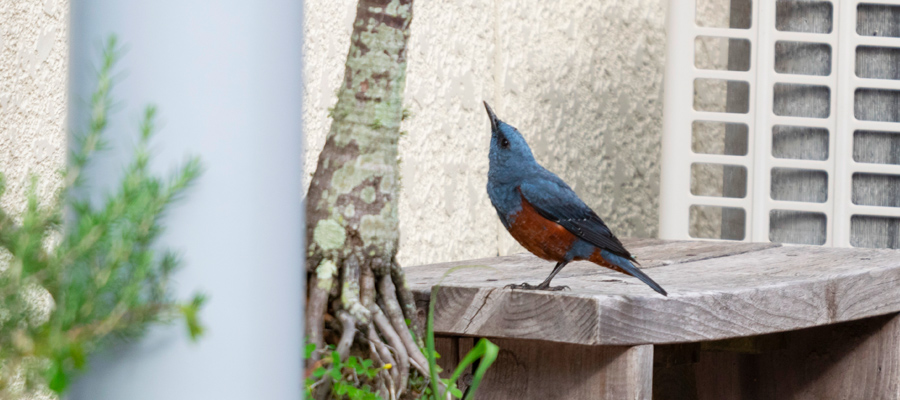
Ecology
Inhabits coastal cliffs and rock shades. Recently, it seems to nest on the rooftops of buildings in urban areas. Eggs are laid in early May, and the couple raises the young. They live alone except during the breeding season. Individuals in northern Japan migrate to warmer regions in winter.
Feeding and food of rock-eared bulbul
It preys on crustaceans and insects on the ground. When they sing, they often stay on tree branches, cliffs, or on top of buildings, but when they catch and eat food, they come down to the ground. The rock-eared rock-eared bulbul near my house is looking for food while walking on blocks along the river.
Expansion into inland areas
In recent years, the distribution has expanded to inland areas. I have often witnessed a male and female pair along the Yudono River in Hachioji, Tokyo. It seems that the survey was conducted in 2018 as an event of the National Bird Breeding Distribution Survey.
Regarding the breeding situation in inland areas, a study at Sagamiko Station, which is 50 km from the coast (Tabuchi, 2015), and a study of a habitat that combines an apartment and grassland in Sanda City, Kobe Prefecture (Torii, Ezaki, 2014). and so on. The coastal cliffs where the rock-eared bulbul originally lived are similar to man-made environments such as apartment buildings in urban areas, suggesting the possibility that the rock-eared bulbul may settle in places where it is easy to forage. In the near future, it may become a wild bird commonly seen in urban areas.
- References
・ Tabuchi, T. (2015): Breeding of rock-eared bulbuls in inland areas - rock-eared bulbuls nesting at Sagamiko Station (Midori Ward, Sagamihara City), BINOS, vol.22, 2015, p.37-43
・Torii, Norichika, Ezaki, Yasuo (2014): Habitat and Spatial Structure of Rock-throated Bulbul -Advancement to Inland Cities-, Yamashina Journal of Ornithology, Vol.46, No.1, 2014, pp.15-24
Habitat
It is often seen along the coast, but it is also seen in inland areas and seems to be breeding.
Ogasawara Islands Chichijima
Found on the coast of Chichijima, Ogasawara Islands. They were walking and jumping on the roofs of houses and roads. When it began to fly, it flapped its wings rather slowly, defying gravity. The scalpel blended so well with the concrete that it was difficult to notice from a distance. Relatively friendly, he didn't run away even when humans approached him.
Yudono River and Asakawa, Hachioji City
It can also be seen year-round along the Yudono and Asakawa rivers in Hachioji, Tokyo. You can hear them chirping on blocks along the river or on apartments a short distance from the river. They are sometimes found under or near bridges, and may use them to nest.
Miura Peninsula
I found a female on the promenade along the coast of the Miura Peninsula.
Near Katakura Station on the Yokohama Line
There was a male near the platform of JR Yokohama Line Katakura Station. It had been chirping since morning on the concrete wall. Sometimes it is perched on top of a convenience store on the south side of the station or on top of an apartment building.
Videos
The videos of the Blue Rock Thrush.
A male along the Yudono River in Hachioji City.
A male singing on a telephone pole.
A riverside female.
Pictures
Introducing a picture of Blue Rock Thrush.

Picture book
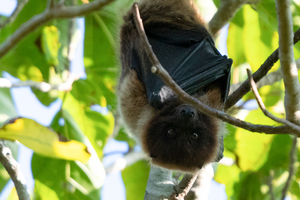
Ryukyu flying fox
Only the feathers around the neck are light in color.......ead more.

Common Glider
Blackish brown with three white lines running.......ead more.
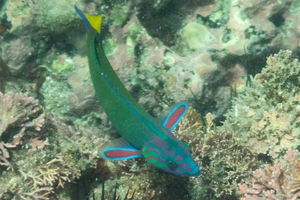
Moon wrasse
Colorful wrasse.......ead more.

Common Merganser
Elongated duck with a flesh-colored beak.......ead more.

Indian red admiral
bright orange Nymphalidae......ead more.
